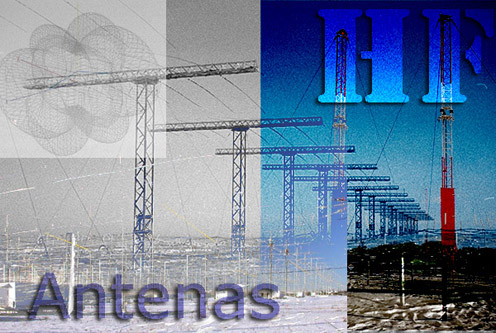
HF Antennas
 This page contains all resources about HF antennas available in EA4FSI-28T1 web site. You will find mainly analysis of most frequent used antennas in emergency communications, performed with shareware programs such as MMANA-GAL, HFAnt and 4NEC2. Information about homebrew antennas and field tests is also available. Please take into account that all the material in this page is experimental and may contain errors. Press over each antenna's pictures to access a page with a detailed analysis. If you want to submit comments or suggestions, please use this form.
This page contains all resources about HF antennas available in EA4FSI-28T1 web site. You will find mainly analysis of most frequent used antennas in emergency communications, performed with shareware programs such as MMANA-GAL, HFAnt and 4NEC2. Information about homebrew antennas and field tests is also available. Please take into account that all the material in this page is experimental and may contain errors. Press over each antenna's pictures to access a page with a detailed analysis. If you want to submit comments or suggestions, please use this form.
 Esta página también está disponible en Español (this page is also available in Spanish).
Esta página también está disponible en Español (this page is also available in Spanish).
Multiple dipole
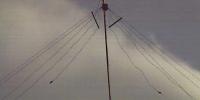 |
This article describes the design and simulation of a multiple dipole antenna for the HF band, using the software MMANA-GAL. The antenna will be designed to operate in the 10, 20, 40 and 80 m bands. The simulations are focused to obtain the impedance and the radiation patterns of the antenna in those bands. |
Codan C463 multiwire broadband dipole
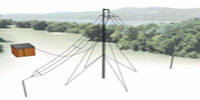 |
This article describes the design and simulation of a Codan C463 multiwire broadband dipole, using the software MMANA-GAL. The simulations does not include the loads and thus are focused to obtain the approximate radiation patterns of the antenna in several frequencies in the HF band. |
Comrod AH-52 HF/VHF broadband dipole
 |
This article describes the design and simulation of a Comrod AH-52 HF/VHF broadband dipole, using the software MMANA-GAL. The simulations does not include the loads and thus are focused to obtain the approximate radiation patterns of the antenna in several frequencies in the HF band. |
Two wire broadband HF dipole
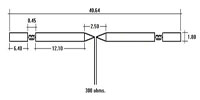 |
This article describes the design and simulation of a two wire broadband dipole antenna for the HF band, using the software 4Nec2. The antenna is designed to operate in the full range 3-30 MHz. The simulations are focused to obtain the impedance and the radiation patterns of the antenna in this band. |
Horizontal dipole
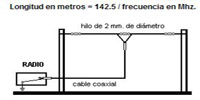 |
This article describes the characteristics of an horizontal dipole and shows the results of several simulations made with MMANA-GAL, covering models for the 20 m, 40 m and 80 m bands. The goal of the simulations is to study the optimum height to install the dipole in order to work in NVIS (Near Vertical Incident Skywave). |
Invelco AT-110 folded dipole antenna
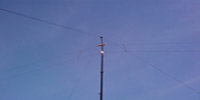 |
Simulations of the wideband antenna Invelco AT-110. The AT-110 is a folded dipole
wideband antenna with a resistive load, able to operate between 1,5 MHz and 30 MHz with a maximum power of 150 W or 1,5 kW, depending on the version. The inverted vee configuration makes the antenna suitable to work NVIS at the lower frequencies and DX in the higher ones. |
Marconi antenna
 |
This article describes the characteristics of the Marconi antenna and shows the results of several simulations made with MMANA-GAL, covering models optimized for the 20 m, 40 m and 80 m bands. The goal of the simulations is to check the behaviour of the antenna both in it fundamental band of design and in the harmonic bands, taking into account the impedance and the radiation patterns. |
Monopoles - Simulations on ground planes
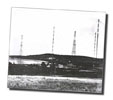 |
In this page you will find an analysis of several monopole configurations, the differences between a perfect and an imperfect ground and the effects of using a ground plane made of radials or counterpoises. The analysis are based on simulations performed with the 4NEC2 software and are performed introducing new elements in successive aproximations. |
Rhombic antennas
 |
Description and simulation of two types of rhombic antennas, using the software 4Nec2: the simple bi-directional and the terminated directional rhombic antenna. This kind of antennas is well known thanks to their relative high gain associated to a simple design, being the main drawback the formation of important secondary lobes in the radiation pattern. The analysis takes into account the variations of several parameters, such as the size of the antenna, the acute angle of the rhombus, the value of the resistive load (in the terminated case) and the height of installation. |
Sloping Vee 470
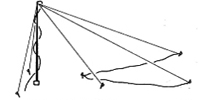 |
This article describes the design and simulation of a multiband Sloping Vee antenna for the HF band, using the software MMANA-GAL. The simulations are focused to obtain the impedance and the radiation patterns of the antenna between 2 MHz and 20 MHz. |
Windom
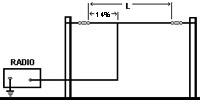 |
This article describes the characteristics of the Windom antenna and shows the results of several simulations made with MMANA-GAL, covering models optimized for the 20 m, 40 m and 80 m bands. The goal of the simulations is to check the behaviour of the antenna both in it fundamental band of design and in the harmonic bands, taking into account the impedance and the radiation patterns. |
Notes on Antenna Simulation using NEC-2
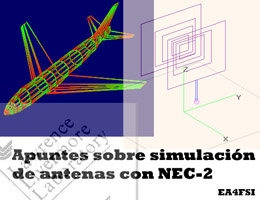 |
Notes and recommendations about antenna simulations using software based on the NEC-2 algorithm, developed by the Lawrence Livermore National Laboratory. The recommendations and rules of design have been compiled both from the manuals of some programs and from technical articles about antenna simulation.
Article published in the Spanish Amateur Radio Union Magazine (URE). December 2012. |

![]() This page contains all resources about HF antennas available in EA4FSI-28T1 web site. You will find mainly analysis of most frequent used antennas in emergency communications, performed with shareware programs such as MMANA-GAL, HFAnt and 4NEC2. Information about homebrew antennas and field tests is also available. Please take into account that all the material in this page is experimental and may contain errors. Press over each antenna's pictures to access a page with a detailed analysis. If you want to submit comments or suggestions, please use this form.
This page contains all resources about HF antennas available in EA4FSI-28T1 web site. You will find mainly analysis of most frequent used antennas in emergency communications, performed with shareware programs such as MMANA-GAL, HFAnt and 4NEC2. Information about homebrew antennas and field tests is also available. Please take into account that all the material in this page is experimental and may contain errors. Press over each antenna's pictures to access a page with a detailed analysis. If you want to submit comments or suggestions, please use this form.![]() Esta página también está disponible en Español (this page is also available in Spanish).
Esta página también está disponible en Español (this page is also available in Spanish).











